
Sunday, 9 November 2008
Why We Call It Fall

The oaks are the last to let go of their leaves.
There's a lawn under here, somewhere
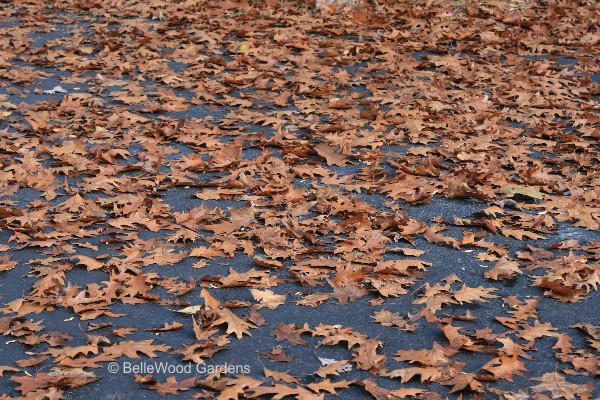
and a driveway . . . . .
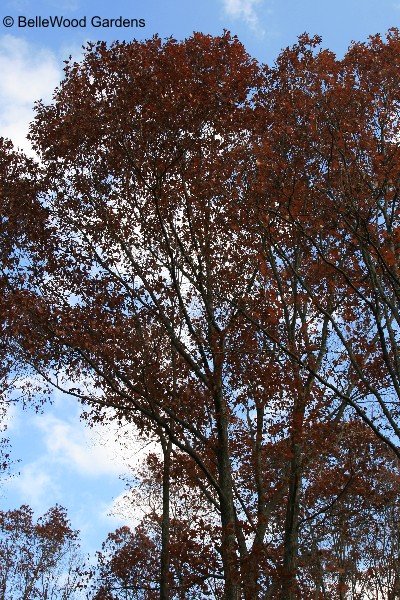
Lots of leaves on the ground, for sure. But look
at all the leaves still up in the oak trees.

Tuesday, 18 November. Not even ten days later.
There's been rain. There's been wind. Bare trees.
It is the fall of the year, its descent into winter.
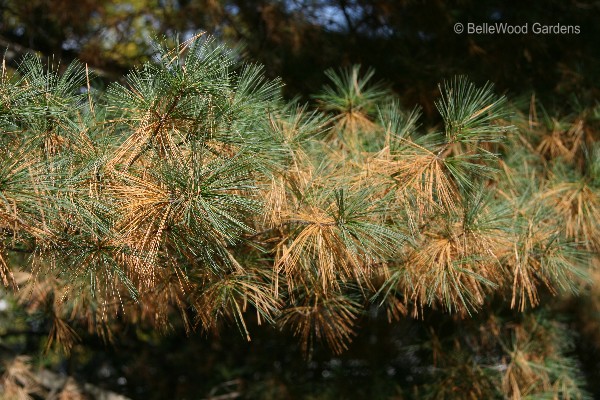
It matters not whether a tree is deciduous or evergreen.
Sooner or later, its leaves will drop, even the needles on a conifer
such as this pine whose resinous needles age, fade, and drop.
AN ASIDE
Pine needles make an excellent mulching material,
light and airy, slow to decay. I find them a superb choice
as winter protection for my hardy banana, Musa basjoo.
Hardy, yes, but some assistance helps it through the cold.
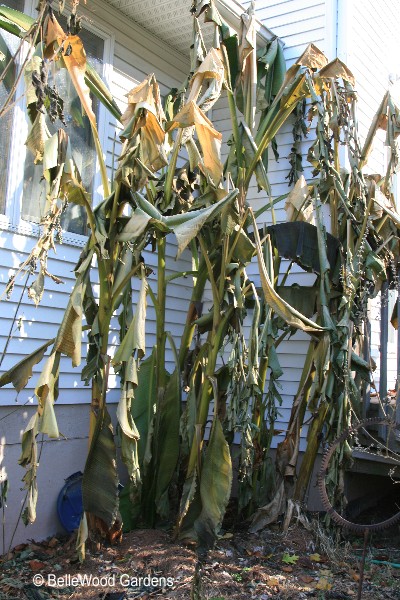
It is 30 October. You can see how the culms
have been kissed by frost, and the leaves are withered.
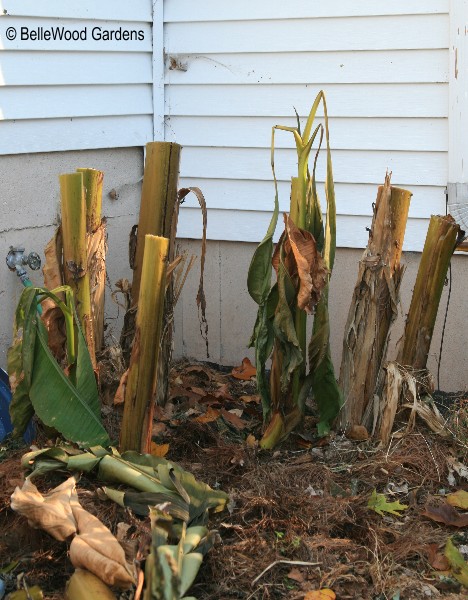
I cut back the culms, leaves, stalk, and all.
Bananas, by the way, are neither tree nor shrub. They are,
in fact, huge herbaceous plants with no woody parts.

I use plastic garbage cans, with the bottom cut away.
Pine needles fill the space between culm and can, filling
it to the top. The needles are not compressed
as the air spaces help insulate the banana culms.
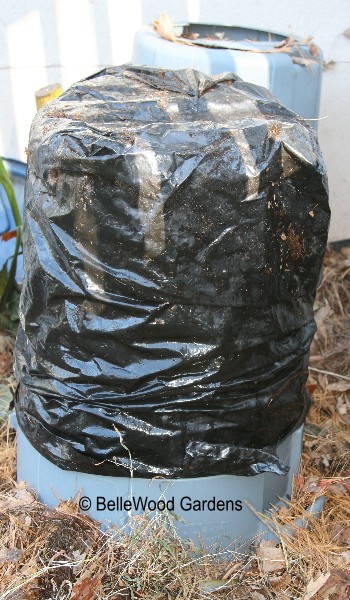
A sturdy plastic bag from a bale of potting mix
serves as a jacket for the garbage can and its contents.
Come spring, the pine needles are easily removed when
it is time for the bananas to wake up and grow.
18 October 2008
Leaves are green due to chlorophyll. Manufactured throughout the productive portion of a leaf's life, it is chlorophyll that uses solar energy to transform carbon dioxide into sugars. When leaves age and chlorophyll is no longer manufactured, leaves turn yellow. The color, from carotenoid pigment, was actually there all along but masked by chlorophyll. (Leaves also turn yellow due to chlorosis, a problem with iron metabolism, occasionally lack of magnesium. Or a virus. But let's stay with normal, healthy leaves, for now.) This means that in autumn as days shorten and nights cool, when an abcision layer forms shutting the leaf off from nutrient sap flow, they turn yellow. With the right kind of tree or shrub - vaccinium are good at this, so too dogwoods, lots of maples, sumac - they have the potential to go out in a blaze of glory. Here on the eastern coast of North America and also in Japan, the coming together of mild sunny days and lengthening chilly nights means that these plants manufacture anthocyanin pigments that color their leaves vibrant red, scarlet, purple, burgundy.
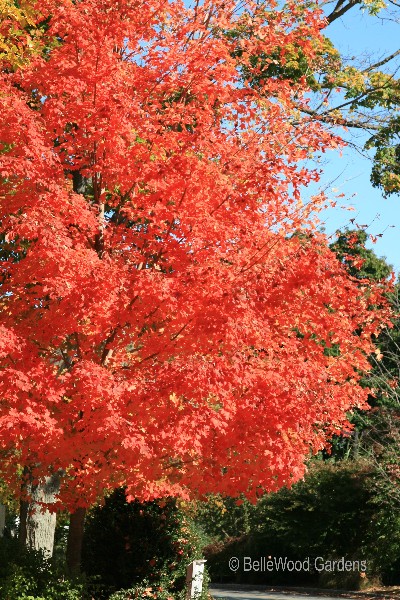
A maple, incandescently ablaze in scarlet dress before falling into decay.
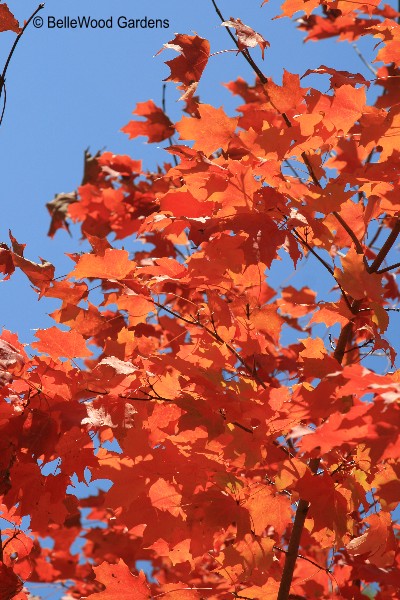
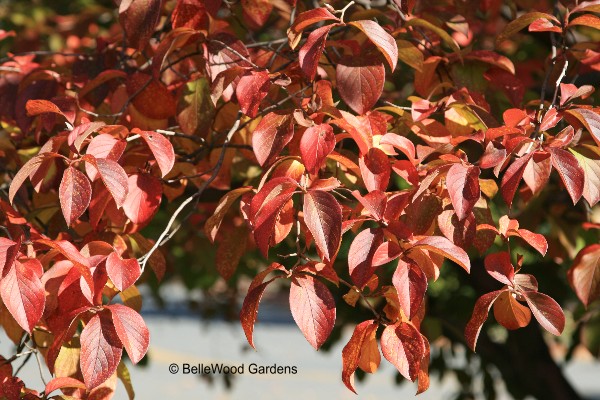
Flowering dogwood, Cornus florida, turns a deeper oxblood red.
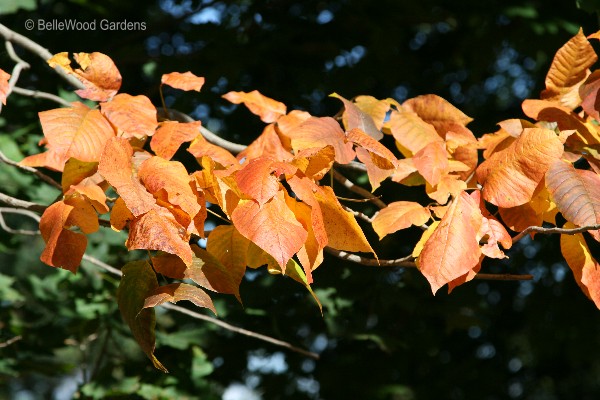
And even poison ivy, Rhus radicans, can turn attractive color in fall.
If, that is, conditions are suitable. Growing in a shady forest, the itch-causing vine
with fade from green to yellow. It needs sunlight to potentiate more vibrant hues.
The trees in one acre of deciduous woodland drop as much as two tons of leaves each fall.
Good reason that here in North America rather than autumn we often use "fall" as the season's name.